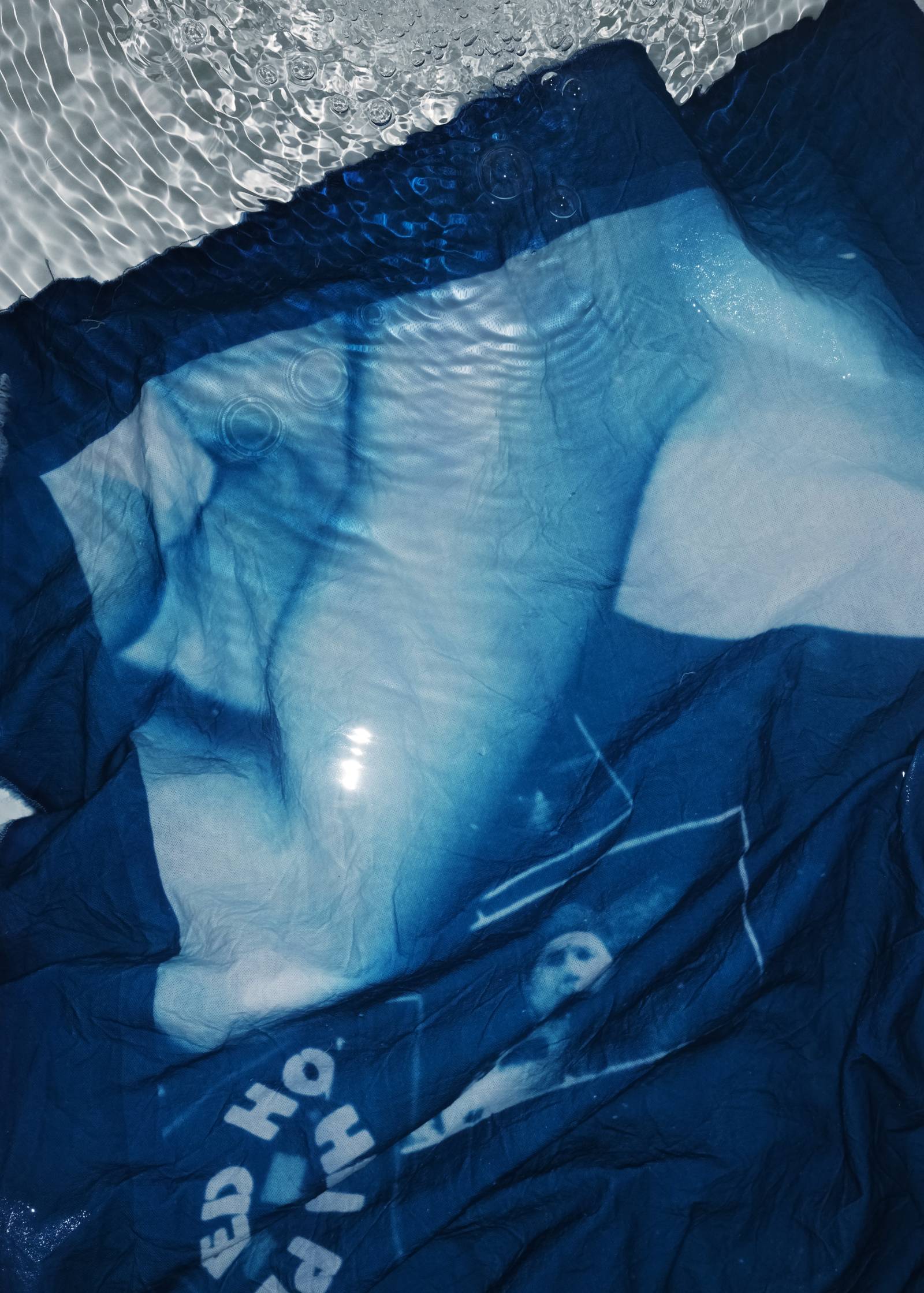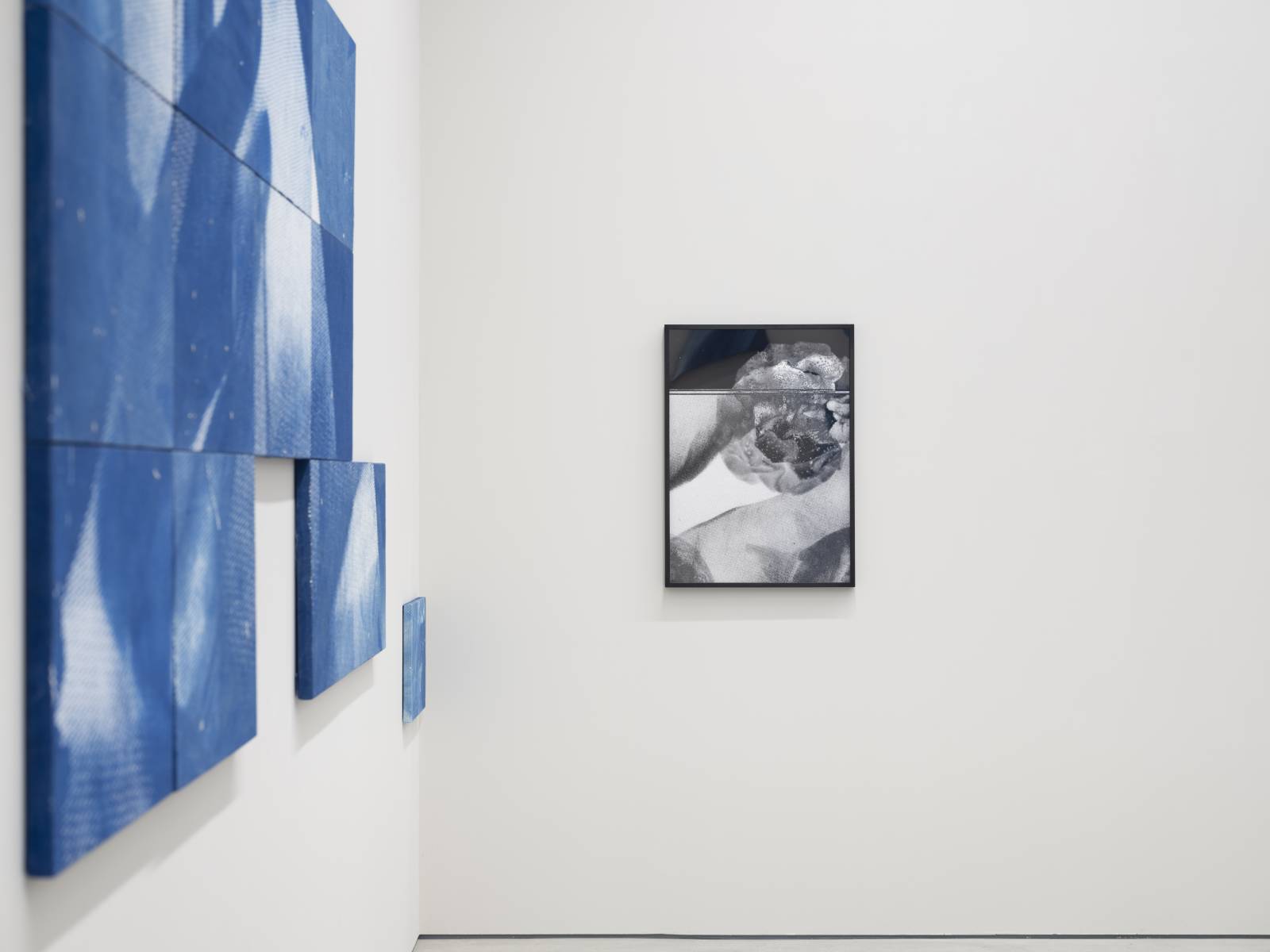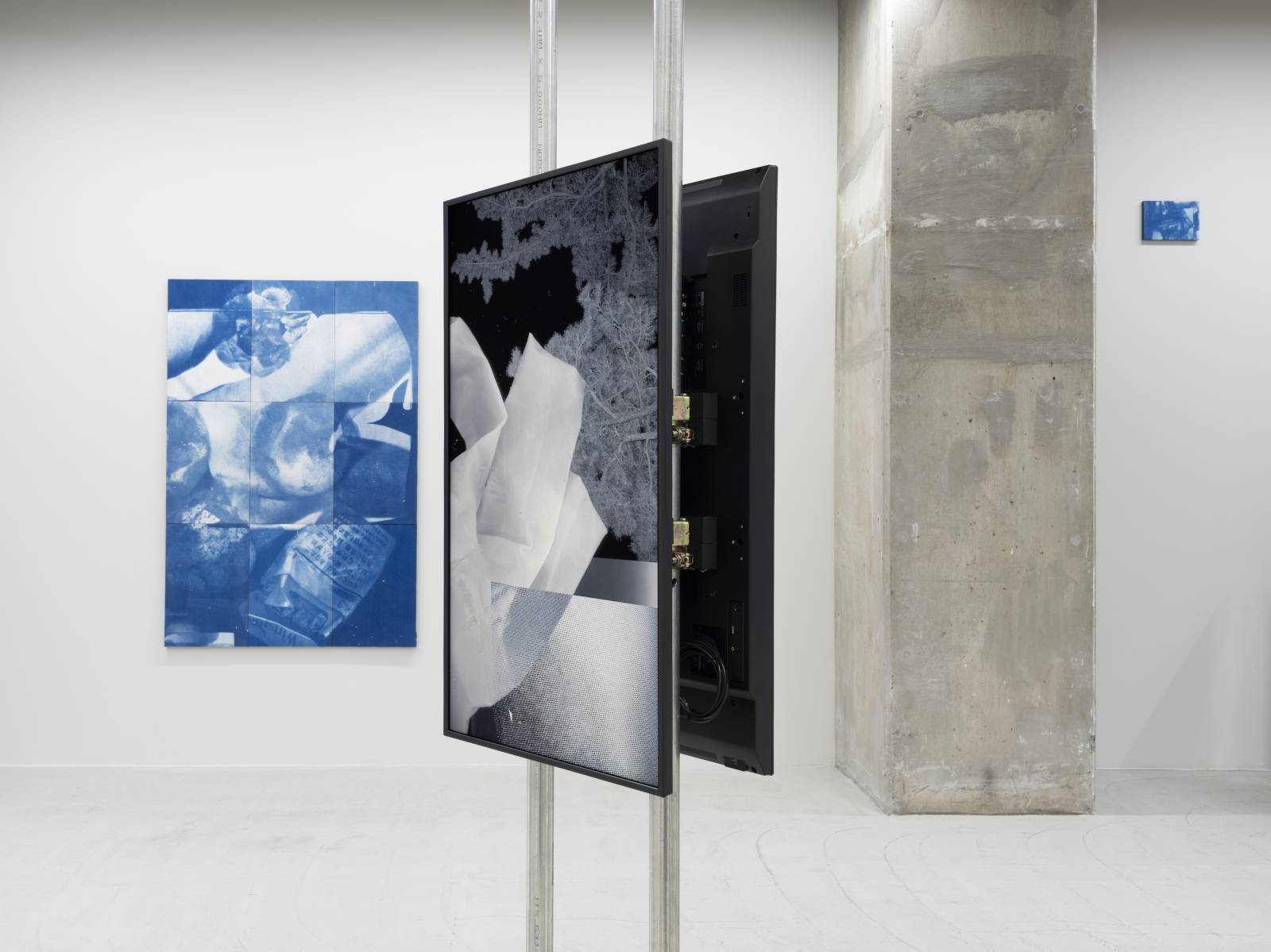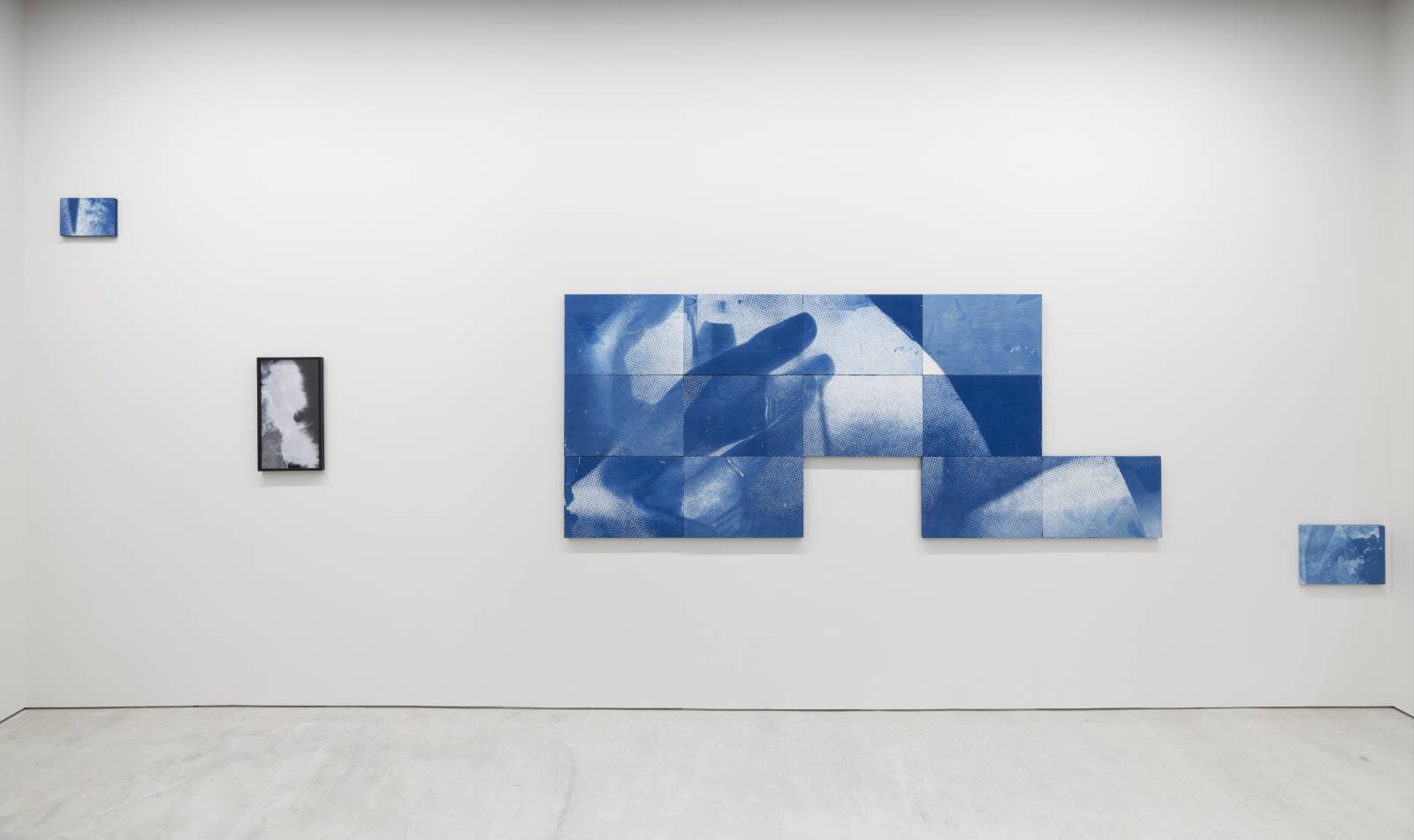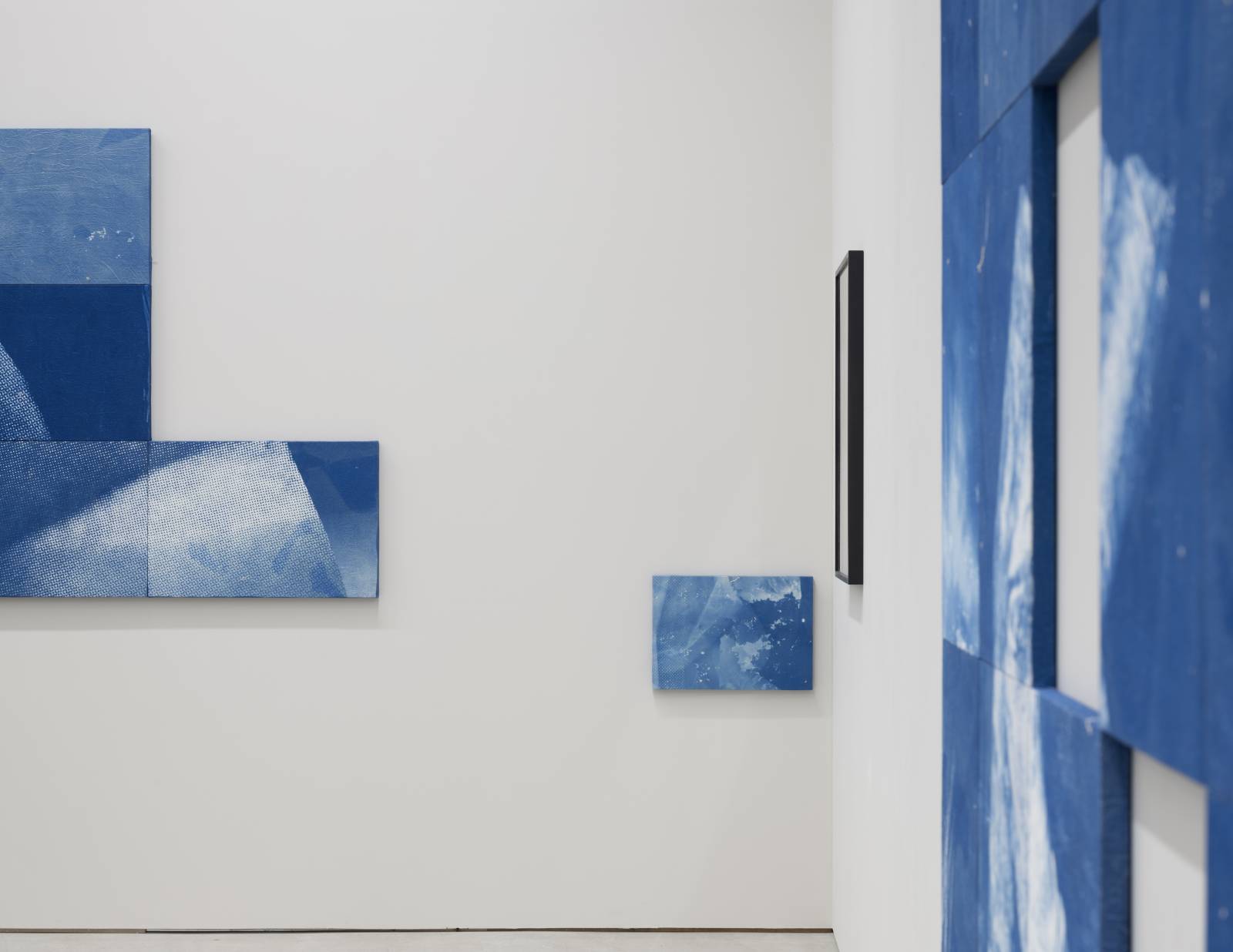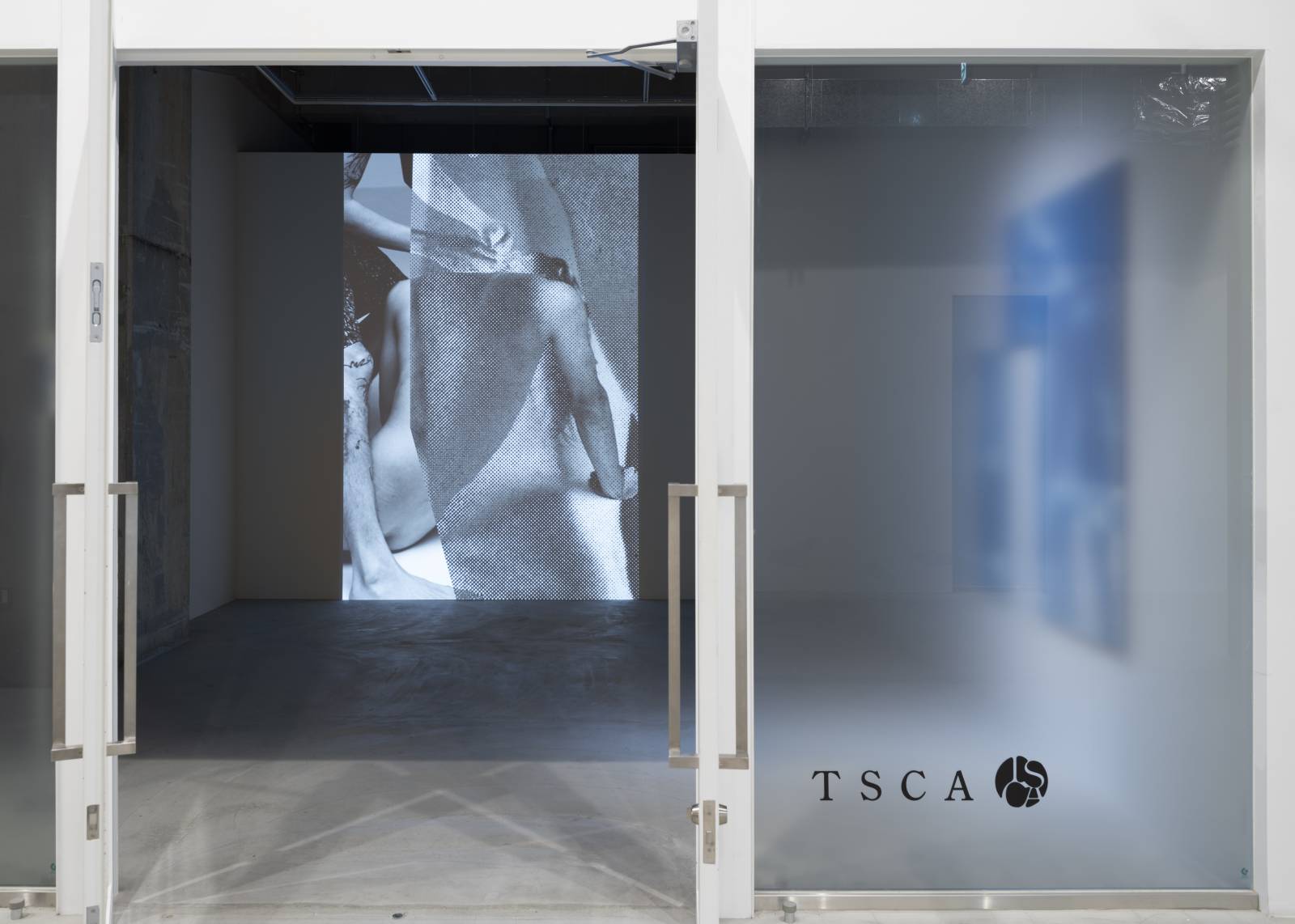Mayumi Hosokura | walking, diving
2 September - 21 October, 2023
Venue : Takuro Someya Contemporary Art
Takuro Someya Contemporary Art is pleased to announce Mayumi Hosokura’s upcoming solo exhibition walking, diving, opening on Saturday, September 2.
This exhibition, Hosokura’s first at TSCA in two years following The Eye Draws (2021), comprises new works from walking, diving, a series of cyanotypes first presented in Post-Human Narratives—In the Name of Scientific Witchery at the Hong Kong Museum of Medical Sciences (2022) and later that same year in TSCA’s booth at Art Collaboration Kyoto. The exhibition, which spans two spaces, will also include a new video work.
walking, diving
I combine the images I encounter daily into one large image. I call it a “map” of sorts.
The map expands with time. I walk through the digital image on the screen in search of the “pieces” that strike me and like a freediver, I plunge into the data and return with an image.
When I dive into the data and gaze at the slowly scrolling screen, the images I have taken in the past become distant and I encounter “pieces” within them, previously overlooked, that captivate me anew.
Some details were in the image from the beginning while others are like cells automatically generated during compositing.
New discoveries and re-cropping. This process makes me feel as though I am half drifting away from myself.
From there, I pull the data back into the real world once again.
The deep blue image called cyanotype—created by exposing ferric ammonium citrate and potassium ferricyanide to sunlight and fixing through submergence in water—gives me a strange sense of unease and novelty, as though it is something I know and do not know, something both decaying and reborn.
Mayumi Hosokura
Through photography, Hosokura has explored the boundaries of self/other, the body, and sexuality. In recent years, she has been interested in the feeling of being “unable to share” an experience with others. In a visually driven society that assumes anything “visible” can be shared, Hosokura challenges the certainty of this belief using precisely visual expression itself to do so.
walking, diving is a recent series that began in 2022 and is a new development in Hosokura’s practice of visualizing and conveying the fundamentally personal “experience of seeing.”
What Hosokura describes as a “map” in her text accompanying these works is a single enormous image created by combining individual images she collects daily. This series, which employs cyanotype, one of the oldest photographic techniques, to fix details cut out from the larger image, attempts to discover the unknown desire of the artist’s gaze. Hosokura’s process of “walking” through her collection of images and “diving” into, or hyper-magnifying, specific areas to harvest new images redefines the photograph from a flat surface to a space with depth.
The process of reassembling portions of the “map” with cyanotype requires the image to be broken apart and exposed in parts. Exposure to the sun, an unstable light source, causes differences in the tone and intensity of color across the individual pieces. As photography becomes increasingly automated and error-proof, to incorporate such flaws originating in the natural environment or excavate seemingly insignificant details from mundane scenes and expose them slowly with the power of sunlight is to embody photography in an unvarnished and fundamental state.
The blue cyanotypes recall the bluish cast iconic to Hosokura’s work, including KAWASAKI.
According to Hosokura, the pale blue tone is a way to highlight the fact that “the photograph is not reality.” A method that necessarily results in deep blue images, cyanotype is a natural choice for Hosokura to create the unreal images she desires.
The giant collages of images Hosokura refers to as “maps” feature in her recent work in various ways. NEW SKIN, presented in 2019, is a video work that recreates Hosokura’s gaze as she walks through and discovers striking details in a “map” that brings together cutouts from gay magazines, photographs of male sculptures, and selfies found online with the artist’s own photographs of men.
In this work, the viewer vicariously experiences Hosokura’s gaze as it is drawn to specific points within the “map” of her creation. Hosokura repeatedly zooms into areas where cell-like details have been generated through compositing. Such elements are unplanned errors at the same time that they are a “new skin” born from digital photography technology. By examining (and in turn showing the viewer) the texture of this “skin” again and again, the work disrupts numerous ways skin marks boundaries, including skin as it serves as the surface between one person and another and separates one person’s perspective from that of another, skin and cells that serve as the criteria to distinguish between living and non-living entities, and skin in its role of defining gender which is expressed in photography as “man as the photographer, woman as the photographed.”
digitalis is a series of video works in which a camera crawls slowly across “maps” of an exaggeratedly horizontal format. The protracted scroll forces the viewer’s gaze to “walk” through the video the same way that Hosokura “walked” through NEW SKIN and walking, diving.
“Digitalis” is the name given by the brother of a friend of the main character in a graphic novel by Yumiko Oshima, itself named Digitalis, to describe “the biggest and brightest” of the “amorphous luminous bodies which appear out of nowhere when I force my eyes closed, unable to sleep.” Oshima’s graphic novel, which shares its name with the “nebula” that represents individual vision, is a device to experience the difficulty of sharing one’s perspective with someone else.
Hosokura’s “maps,” as seen in the new series walking, diving as well as digitalis and NEW SKIN, are collages that display various elements of visual culture as they flow into her consciousness. From an art historical perspective, they are traceable to the work of Robert Rauschenberg, known for his Combine Paintings which bring miscellaneous magazine and newspaper clippings together with assorted objects from the artist’s life onto the picture plane. The critic Leo Steinberg coined the term “flatbed picture plane” regarding these works to demonstrate that whereas painting had previously possessed a perpendicular orientation to the ground, and was thus viewed and experienced accordingly, Rauschenberg’s works shifted their axis toward the horizontal “work-surface” such as the desk or floor.
Unlike Rauschenberg, who physically combined miscellaneous things such as everyday objects and cloth on the picture plane, Hosokura takes a purely photographic approach, collecting various elements and spreading them out along the horizon, as on a map, in order to merge them. But though her maps are generated on the two-dimensional plane of the Mac desktop, they are surfaces in which Hosokura moves vertically and horizontally and possess both area and depth sufficient to immerse viewers in a state befitting the term “diving.” If Rauschenberg’s work reflects a society in which the speed of information was accelerating dramatically, Hosokura shares her perspective of walking upon the surface of her work and in so doing reflects an image environment alluding to the increasing diversity and openness of desire found in our world today and the response of our visual physiology to such wants.
Hosokura has also garnered international acclaim for her portrait photography, including those collected in KAZAN (artbeat publishers, 2012) Transparency is the new mystery (MACK, 2016), and KAWASAKI PHOTOGRAPHS (cyzo, 2017). As described above, Hosokura’s portraits are characterized by a unique use of color that lessens their reality. These photographs do not present figures from whom narratives can be imagined but rather exist each as individual moments, fleeting and eternal, that speak to Hosokura’s pride as a photographer.
Hosokura’s photographs acknowledge and confront the “tradition” of photographers who established their originality by “showing” the individuality of their visual desires; her work possesses a clarity about “photography” and an irrepressible heat.
Editorial input by Yuzu Murakami
Translation by Eriko Ikeda Kay
Mayumi Hosokura
Based on the tactile sense of vision, Hosokura reorganizes boundaries which was/is regarded natural between organism and mineral, human and animal, human and machine, also nationalities and races, based on sexuality and gender.
Graduated faculty of literature, Ritsumeikan university and Graduated institute of photography, Nihon university of Art.
Major solo exhibitions include Sen to Me (2021, Takuro Someya Contemporary Art, Tokyo), NEW SKIN (2019, mumei, Tokyo, JP), JUBILEE (2017, nomad nomad studio, HongKong, HK), CYALIUM (2016, G/P gallery, Tokyo, JP),CRYSTAL LOVE STARLIGHT (2014, G/P gallery, Tokyo, JP), Transparency is the new mystery (2012,Kuandu museum of fine arts 2F exhibition room, TAIPEI, TW).
Major group exhibitions include Digitalis or First-person Camera (2021, Takuro Someya Contemporary Art, Tokyo), Anneke Hymmen & Kumi Hiroi, Tokuko Ushioda, Mari Katayama, Maiko Haruki, Mayumi Hosokura, and Your perspective (2021, Shiseido Gallery, Tokyo), The Body Erectric (2020, National Gallery of Australia, Canberra, AUS), Things so faint but real (2018, Tokyo Photographic Art Museum, Tokyo, JP), Close to the Edge: New photography from Japan(2016, Miyako Yoshinage, NY, US), Tokyo International Photography Festival (2015,Art Factory Jonanjima, Tokyo, JP), Reflected-works from the Foam collection(2014 Foam Amsterdam, Amsterdam, NL).
Hosokura has published numerous photobooks, including WALKING, DIVING, artbeat publishers (2022), FASHON EYE KYOTO by MAYUMI HOSOKURA, LOUIS VUITTON (2021), NEW SKIN, MACK, 2022, Jubilee, artbeat publishers (2017), transparency is the new mystery, MACK (2016), FASHION EYE KYOTO by Mayumi Hosokura, LOUIS VUITTON (2021). Her work belongs to the public collection at Tokyo Photographic Art Museum, among others. Essays “Eyelids” are currently serialized on the Hanatsubaki (Shiseido), website.
Mayumi Hosokura | walking, diving
Exhibition Period: Saturday, September 2, 2023 – Saturday, October 7, 2023 *Extended until Saturday, October 21, 2023
Open: Tue-Sat, 11:00 a.m. – 6:00 p.m.
Closed: Sun, Mon and National Holidays
Takuro Someya Contemporary Art
TSCA 3F TERRADA Art Complex 1-33-10 Higashi-Shinagawa Shinagawa-ku Tokyo 140-0002 Japan
tel 03-6712-9887 |fax 03-4578-0318 |e-mail gallery@tsca.jp


